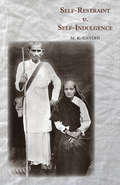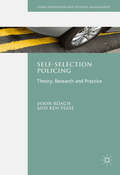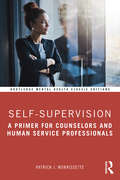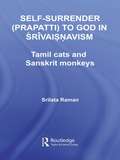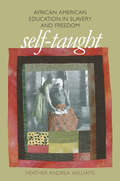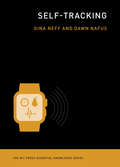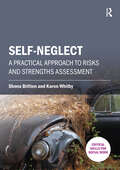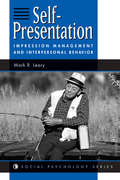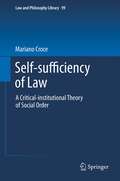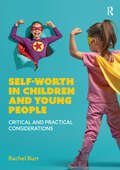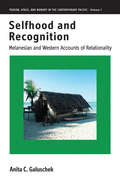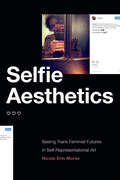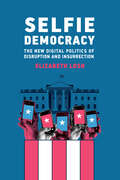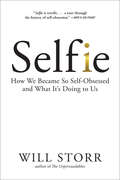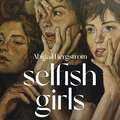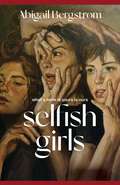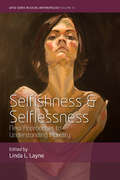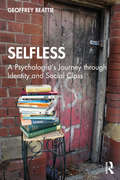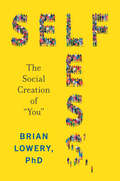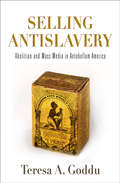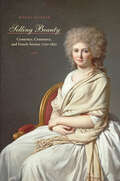- Table View
- List View
Self-Restraint V. Self-Indulgence
by M. K. GandhiThose who believe in self-restraint must not become hypochondriacs. The letters that come to me show that many correspondents brood over their ill-success the exercise of self-restraint. Like everything else that is good, self-restraint too requires an inexhaustible store of patience. There is absolutely no reason to despond, and there must be no brooding. There should be no conscious effort to drive away evil thoughts. That process is itself a kind of indulgence. The best prescription perhaps is non-resistance, i.e., ignoring the existence of evil thoughts and a continuous preoccupation with duties that lie in front of one. This presupposes the existence of some kind of all-absorbing service requiring the concentration of mind, soul and body upon it. “Idle hands some mischief still will ever find to do”, is never so applicable as in this case. Evil thoughts, much more evil deeds are impossible when we are thus preoccupied. Strenuous labour in accordance with one’s physical capacity is, therefore, absolutely necessary for those who will obey the law of self-restraint which is indispensable for individual as well as universal progress. M. K. Gandhi
Self-Selection Policing
by Ken Pease Jason RoachSelf-Selection Policing introduces and explores an approach for crime control which seeks to identify active, serious offenders by attending to the minor offences they commit. A foundation of theory and evidence is first supplied for the assertion that 'those who do big bad things also do little bad things'. Original research presented in the book includes a study of offending by visitors to a prison, and the concurrent criminality of those committing common driving offences and failure to produce driving documents as required. It illustrates how self-selection can complement other police methods of identifying active, serious criminals by focusing on what offenders do rather than who they are and what they have done in the past. Concentrating on the 'usual suspects' in the conventional way is often criticised as harassment and self-selection policing largely bypasses the issue of fairness this raises. The book concludes with a call for the consideration, development and wider adoption of the self-selection approach, and particularly the identification of other common minor offences which flag concurrent active criminality. The authors make important suggestions for the progression of SSP research and practice, including the identification of barriers to the implementation of the approach in wider police thinking, practice and policy. Practical guidance is also provided for those thinking of developing, testing and implementing the approach. In doing so, the book will be of particular interest for policing practitioners, as well as students and scholars of policing and crime control.
Self-Supervision: A Primer for Counselors and Human Service Professionals (Routledge Mental Health Classic Editions)
by Patrick J. MorrissetteSelf-Supervision synthesizes the literature on the theory and practice of self-supervision and provides counselors and human service professionals with a plan for the pursuit of independent professional growth. The classic edition includes a new preface from the author reflecting on his work and on the changes in society and the field since the book’s initial publication. In these chapters, professionals will find cost-effective and efficient strategies for developing their skills while still ensuring that they’re providing quality treatment. They’ll also find a diverse array of strategies for self-supervision and a thoughtful discussion of reflective processes required to effectively evaluate one’s own practices.
Self-Surrender: Tamil Cats or Sanskrit Monkeys? (Routledge Hindu Studies Series)
by Srilata RamanFilling the most glaring gap in Shrivaishnava scholarship, this book deals with the history of interpretation of a theological concept of self-surrender-prapatti in late twelfth and thirteenth century religious texts of the Shrivaishnava community of South India. This original study shows that medieval sectarian formation in its theological dimension is a fluid and ambivalent enterprise, where conflict and differentiation are presaged on "sharing", whether of a common canon, saint or rituals or two languages (Tamil and Sanskrit), or of a "meta-social" arena such as the temple. Srilata Mueller, a member of the Shrivaishnava community, argues that the core ideas of prapatti in these religious texts reveal the description of a heterogeneous theological concept. Demonstrating that this concept is theologically moulded by the emergence of new literary genres, Mueller puts forward the idea that this original understanding of prapatti is a major contributory cause to the emergence of sectarian divisions among the Shrivaishnavas, which lead to the formation of two sub-sects, the Tenkalai and the Vatakalia, who stand respectively, for the "cat" and "monkey" theological positions. Making an important contribution to contemporary Indian and Hindu thinking on religion, this text provides a new intellectual history of medieval Indian religion. It will be of particular interest to scholars of Shrivaishnava and also Hindu and Indian religious studies.
Self-Taught
by Heather Andrea WilliamsIn this previously untold story of African American self-education, Heather Andrea Williams moves across time to examine African Americans' relationship to literacy during slavery, during the Civil War, and in the first decades of freedom. Self-Taught traces the historical antecedents to freedpeople's intense desire to become literate and demonstrates how the visions of enslaved African Americans emerged into plans and action once slavery ended.Enslaved people, Williams contends, placed great value in the practical power of literacy, whether it was to enable them to read the Bible for themselves or to keep informed of the abolition movement and later the progress of the Civil War. Some slaves devised creative and subversive means to acquire literacy, and when slavery ended, they became the first teachers of other freedpeople. Soon overwhelmed by the demands for education, they called on northern missionaries to come to their aid. Williams argues that by teaching, building schools, supporting teachers, resisting violence, and claiming education as a civil right, African Americans transformed the face of education in the South to the great benefit of both black and white southerners. In this previously untold story of African American self-education, Heather Andrea Williams moves across time to examine African Americans' relationship to literacy during slavery, during the Civil War, and in the first decades of freedom. Some slaves devised creative and subversive means to acquire literacy, and when slavery ended, they became the first teachers of other freedpeople. Williams argues that by teaching, building schools, supporting teachers, resisting violence, and claiming education as a civil right, African Americans transformed the face of education in the South to the great benefit of both black and white southerners.-->
Self-Tracking im Alltag: Qualitative Aneignungsstudie zur Wechselwirkung zwischen Praktiken der digitalen Selbstvermessung und Körperselbstbild (Medien • Kultur • Kommunikation)
by Jakob HörtnaglDigitale Selbstvermessungsangebote wie Schrittzähler, Ernährungs-Apps oder Sport-Tracker machen den Körper als Objekt von Daten, Zahlen oder Graphen sichtbar. So bieten sie ihren Nutzer*innen laufend Anlässe, eigene Gewohnheiten, Ziele und Leistungen zu evaluieren und selbstbestimmt zu intervenieren. Diese qualitative Aneignungsstudie beschäftigt sich mit der Frage, in welcher Wechselwirkung diese Objektivierung des Körpers zum Körperselbstbild und Wohlbefinden der Nutzer*innen steht. Praktiken der digitalen Selbstvermessung werden im alltäglichen Gebrauch fester Bestandteil etablierter Körperpraktiken und Medienrepertoires, beeinflussen diese durch ihre spezifischen Potenziale aber auch nachhaltig. Die Integration in lebensweltliche Gewohnheiten wird als individueller Balanceakt nachgezeichnet, bei dem die oft mit solchen Angeboten verbundenen Verheißungen der Kontrolle und Selbstermächtigung eng mit Gefühlen des Erwartungsdrucks oder der Insuffizienz verbunden sind. Die vielfältigen Aneignungsweisen sowie deren Konsequenzen für das Wohlbefinden werden schließlich in einer Typologie zusammengeführt, um so den Blick auf die individuellen Kompetenzen zu lenken, die zu disruptiven oder protektiven Momenten der Mediennutzung beitragen können.
Self-Tracking, Health and Medicine: Sociological Perspectives
by Deborah LuptonSelf-tracking practices are part of many health and medical domains. The introduction of digital technologies such as smartphones, tablet computers, apps, social media platforms, dedicated patient support sites and wireless devices for medical monitoring has contributed to the expansion of opportunities for people to engage in self-tracking of their bodies and health and illness states. The contributors to this book cover a range of self-tracking techniques, contexts and geographical locations: fitness tracking using the wearable Fitbit device in the UK; English adolescent girls’ use of health and fitness apps; stress and recovery monitoring software and devices in a group of healthy Finns; self-monitoring by young Australian illicit drug users; an Italian diabetes self-care program using an app and web-based software; and ‘show-and-tell’ videos uploaded to the Quantified Self website about people’s experiences of self-tracking. Major themes running across the collection include the emphasis on self-responsibility and self-management on which self-tracking rationales and devices tend to rely; the biopedagogical function of self-tracking (teaching people about how to be both healthy and productive biocitizens); and the reproduction of social norms and moral meanings concerning health states and embodiment (good health can be achieved through self-tracking, while illness can be avoided or better managed). This book was originally published as a special issue of the Health Sociology Review.
Self-Tracking: The Mit Press Essential Knowledge Series (The MIT Press Essential Knowledge series)
by Gina Neff Dawn NafusWhat happens when people turn their everyday experience into data: an introduction to the essential ideas and key challenges of self-tracking.People keep track. In the eighteenth century, Benjamin Franklin kept charts of time spent and virtues lived up to. Today, people use technology to self-track: hours slept, steps taken, calories consumed, medications administered. Ninety million wearable sensors were shipped in 2014 to help us gather data about our lives. This book examines how people record, analyze, and reflect on this data, looking at the tools they use and the communities they become part of. Gina Neff and Dawn Nafus describe what happens when people turn their everyday experience—in particular, health and wellness-related experience—into data, and offer an introduction to the essential ideas and key challenges of using these technologies. They consider self-tracking as a social and cultural phenomenon, describing not only the use of data as a kind of mirror of the self but also how this enables people to connect to, and learn from, others.Neff and Nafus consider what's at stake: who wants our data and why; the practices of serious self-tracking enthusiasts; the design of commercial self-tracking technology; and how self-tracking can fill gaps in the healthcare system. Today, no one can lead an entirely untracked life. Neff and Nafus show us how to use data in a way that empowers and educates.
Self-neglect: A Practical Approach to Risks and Strengths Assessment (Critical Skills for Social Work)
by Shona Britten Karen WhitbySelf-neglect covers a wide range of behaviours, from neglecting to care for one's personal hygiene and health to one's surroundings; this can include behaviours such as hoarding of objects and/or animals. As presentation of self-neglect cases vary greatly, assessment and support planning should be made on an individualised case by case basis.Self-neglect describes a Risks and Strengths assessment model which has been developed by practitioners as an aid to frontline workers across all sectors, as well as agencies holding responsibilities in Safeguarding Adults. It aims to support and structure the effective, timely and consistent assessment of risk in relation to key social and healthcare factors of self-neglect both on an individual case level and at a strategic level in contributing to community/locality needs analysis and reporting mechanisms; including annual Safeguarding Adults Board Reports.
Self-presentation: Impression Management And Interpersonal Behavior
by Mark R LearyThis book is about the ways which human behavior is affected concerns with people may be doing, their public impressions they typically prefer that No matter what else other people perceive them in certain desired ways and not perceive them in other, undesired ways. Put simply, human beings have a pervasive and ongoing concern with their self-presentations. Sometimes they act in ceflain ways just to make a particular impression on someone else mras when a job applicant responds inthat will satisfactorily impress the interviewer. But more often, people 5 concerns with others’ impressions simply constrain their behavioural options. Most of the time inclined to do things that will lead others to see us as incompetent, inwnoral, maladjusted, or otherwise socially undesirable. As a result, our concerns with others’ impressions limit what we are willing to do.Self-presentation almotives underlie and pervade near corner of interpersonal life.
Self-sufficiency of Law
by Mariano CroceThe book investigates the role of law and legal experts in the organisational dynamics of a population, demonstrating that law is a stable practice among those who (in virtue of the special knowledge they master) are called upon to select the 'normative facts' of a population, i.e. the interactional standards that are proclaimed as binding for the entire population by the publicly recognised legal experts (whose peremptory judgments can be only revised by peers). It proposes an integration of the recent research outcomes achieved in three different areas of study: legal positivism, legal institutionalism and legal pluralism and examines the notions of rule, coercion, institution, practice elaborated by significant theorists in the mentioned areas and illumine both their merits and flaws. Furthermore it advances a notion of law and a description of the legal field which are able to account for the nature of the legal filed as the cradle of the social order. new back cover copy: In an era characterized by a streaking global pluralism, the collapse of many state agencies, the emergence of multiple sources of law, and the rise of informal justice, the idea of a unitary and homogenous legal system seems old-fashioned. But philosophers, sociologists and anthropologists still hold many debates on the nature of law and its function, which is that law represents an institution that characterizes any orderly social context of human beings, and this book plunges into the center of those debates. Self-sufficiency of Law: A Critical-institutional Theory of Social Order investigates the role of law and legal experts in the organizational dynamics of a population. It demonstrates that law is a stable practice among those who are called upon to select the "normative facts" of a population, that is, the interactional standards that are proclaimed as binding for the entire population by the publicly recognized legal experts. To do this, the author proposes an integration of the recent research outcomes achieved in three different areas of study--legal positivism, legal institutionalism and legal pluralism. He examines the notions of rule, coercion, institution and practice elaborated on by significant theorists in these fields, highlighting both the merits and flaws and ultimately advancing a notion of law and a description of the legal field which are able to account for the nature of the legal field as the cradle of social order. This text covers key guidelines for empirical research and political activities in Western and non-Western countries.
Self-worth in children and young people: Critical and practical considerations
by Rachel BurrChallenges current adult-led approaches to working with vulnerable young people, and introduces practitioners and students to creative methods that will enhance the self-worth of children and teenagers.Anthropologist and social worker, Rachel Burr, outlines clear communication techniques for working with children and young people to support them towards self-determination. By critically examining the dominant approaches to children and young people’s mental health, she provides straightforward practical strategies that can be used to address emotional upset, loss, and aid recovery.There has never been a more pressing time to encourage young people and children to engage in methods that allow them to develop a new sense of self-worth and purpose. Whether you’re a professional already working with children, or a student studying for a child-related qualification, this strength-based approach will help you to help children and young people develop a stronger sense of self which can be taken forward and used independently.
Selfhood and Recognition: Melanesian and Western Accounts of Relationality (Person, Space and Memory in the Contemporary Pacific #7)
by Anita C. GaluschekThe disciplines of philosophy and cultural anthropology have one thing in common: human behavior. Yet surprisingly, dialogue between the two fields has remained largely silent until now. Selfhood and Recognition combines philosophical and cultural anthropological accounts of the perception of individual action, exploring the processes through which a person recognizes the self and the other. Touching on humanity as porous, fractal, dividual, and relational, the author sheds new light on the nature of selfhood, recognition, relationality, and human life.
Selfie Aesthetics: Seeing Trans Feminist Futures in Self-Representational Art
by Nicole Erin MorseIn Selfie Aesthetics Nicole Erin Morse examines how trans feminine artists use selfies and self-representational art to explore transition, selfhood, and relationality. Morse contends that rather than being understood as shallow emblems of a narcissistic age, selfies can produce politically meaningful encounters between creators and viewers. Through close readings of selfies and other digital artworks by trans feminist artists, Morse details a set of formal strategies they call selfie aesthetics: doubling, improvisation, seriality, and nonlinear temporality. Morse traces these strategies in the work of Zackary Drucker, Vivek Shraya, Tourmaline, Alok Vaid-Menon, Zinnia Jones, and Natalie Wynn, showing how these artists present improvisational identities and new modes of performative resistance by conveying the materialities of trans life. Morse shows how the interaction between selfie creators and viewers constructs collective modes of being and belonging in ways that envision trans feminist futures. By demonstrating the aesthetic depth and political potential of selfie creation, distribution, and reception, Morse deepens understandings of gender performativity and trans experience.
Selfie Democracy: The New Digital Politics of Disruption and Insurrection
by Elizabeth LoshHow politicians&’ digital strategies appeal to the same fantasies of digital connection, access, and participation peddled by Silicon Valley.Smartphones and other digital devices seem to give us a direct line to politicians. But is interacting with presidential tweets really a manifestation of digital democracy? In Selfie Democracy, Elizabeth Losh examines the unintended consequences of politicians&’ digital strategies, from the Obama campaign&’s pioneering construction of an online community to Trump&’s Twitter dominance. She finds that politicians who use digital media appeal to the same fantasies of digital connection, access, and participation peddled by Silicon Valley. Meanwhile, smartphones and social media don&’t enable participatory democracy so much as they incentivize citizens to perform attention-getting acts of political expression. Losh explores presidential rhetoric casting digital media as tools of democracy, describes the conflation of gender and technology that contributed to Hillary Clinton&’s defeat in 2016, chronicles the Biden campaign&’s early digital stumbles in 2020, and recounts the TikTok campaign that may have spoiled a Trump rally. She shows that although Obama and Trump may seem diametrically opposed in both style and substance, they both used mobile digital media in ways that reshaped the presidency and promised a new kind of digital democracy. Obama used data and digital media to connect to citizens without intermediaries; Trump followed this strategy to its most extreme conclusion. What were the January 6 insurrectionists doing, as they livestreamed themselves and their cohorts attacking the Capitol, but practicing their own brand of selfie democracy?
Selfie: How We Became So Self-Obsessed and What It's Doing to Us
by Will Storr“An intriguing odyssey” though the history of the self and the rise of narcissism (The New York Times).Self-absorption, perfectionism, personal branding—it wasn’t always like this, but it’s always been a part of us. Why is the urge to look at ourselves so powerful? Is there any way to break its spell—especially since it doesn’t necessarily make us better or happier people? Full of unexpected connections among history, psychology, economics, neuroscience, and more, Selfie is a “terrific” book that makes sense of who we have become (NPR’s On Point). Award-winning journalist Will Storr takes us from ancient Greece, through the Christian Middle Ages, to the self-esteem evangelists of 1980s California, the rise of the “selfie generation,” and the era of hyper-individualism in which we live now, telling the epic tale of the person we all know so intimately—because it’s us.“It’s easy to look at Instagram and selfie-sticks and shake our heads at millennial narcissism. But Will Storr takes a longer view. He ignores the easy targets and instead tells the amazing 2,500-year story of how we’ve come to think about our selves. A top-notch journalist, historian, essayist, and sleuth, Storr has written an essential book for understanding, and coping with, the 21st century.” —Nathan Hill, New York Times-bestselling author of The Nix“This fascinating psychological and social history . . . reveals how biology and culture conspire to keep us striving for perfection, and the devastating toll that can take.”—The Washington Post “Ably synthesizes centuries of attitudes and beliefs about selfhood, from Aristotle, John Calvin, and Freud to Sartre, Ayn Rand, and Steve Jobs.” —USA Today“Eminently suitable for readers of both Yuval Noah Harari and Daniel Kahneman, Selfie also has shades of Jon Ronson in its subversive humor and investigative spirit.” —Bookseller“Storr is an electrifying analyst of Internet culture.” —Financial Times“Continually delivers rich insights . . . captivating.” —Kirkus Reviews
Selfish Girls: The dark and gripping novel of family dynamics and toxic sisterhood from the much-acclaimed author of WHAT A SHAME
by Abigail Bergstrom✨'I read this book obsessively, that's how much I adored it . . . a dark, messy and beautiful story about family, love and sisterhood' STYLIST✨✨'A suspenseful thriller and a subtle portrait of domestic interactions, with a healthy dose of humour and hope offsetting its darker moments' HARPER'S BAZAAR✨'A dark, deeply intimate exploration of sisterhood in all it's messy, complex glory. Beautifully written and thoroughly compelling' Yomi Adegoke, Sunday Times bestselling author of The List✨✨'Sharply real and ethereal, as though reading this novel enters you into a deep dream-like state' Emma Gannon, Sunday Times bestseller✨ ✨'Selfish Girls is an outstanding novel, pithy and singular, gloriously dark and compelling, a must read! Salena Godden, author of Mrs Death Misses Death✨✨'Bergstrom is a new voice but sure to be an enduring one' Caroline O'Donoghue ✨✨'If anyone is qualified to write about what it means to be a young woman in Britain today, it's Abigail Bergstrom' Sunday Times✨ NOTHING HURTS LIKE FAMILY.Ines is reluctantly moving home on the edge of a breakdown, her childhood sweetheart in tow. He's only ever wanted what was best for her.Gwen is elated that her prodigal daughter has returned.Dylan is still licking her wounds from a rejection she can't forget.And Emma is quietly suffocating in the perfect marriage she wanted so badly.They were inseparable once. But that was a long time ago. Now, they're back in the Welsh town where they grew up, peeling back the layers of a once forgotten, haunting past. What they find may be the end of them...Uninhibited, claustrophobic and emotionally complex, Selfish Girls spans generations, buried resentments, and an unexpected love story. It is a clear-eyed portrait of a dysfunctional family and the pain we inflict on those we love most.Readers have fallen in love with Selfish Girls'A must read, multigenerational family saga exploring trauma, love, hardship and identity. What Bergstrom has achieved here is outstanding. I can't recommend it highly enough'⭐⭐⭐⭐⭐Reader Review'One of my most anticipated reads of the year . . . and it didn't disappoint. Bergstrom writes with such rawness and her characters have such vulnerability that you can't help but fall in love with them' ⭐⭐⭐⭐⭐Reader Review'Oh my god, she's done it again. It's exquisite. 10 out of 10. No notes . . . we're in our sad girl summer era, and this book is the perfect accompaniment' ⭐⭐⭐⭐⭐Reader Review'My, oh, my, what a book! Full of action and angst, this is not to be missed . . . absolutely fabulous!' ⭐⭐⭐⭐⭐Reader Review'Harrowing and painful at times, but also beautiful' ⭐⭐⭐⭐⭐Reader Review
Selfish Girls: The dark and gripping novel of family dynamics and toxic sisterhood from the much-acclaimed author of WHAT A SHAME
by Abigail Bergstrom✨'If anyone is qualified to write about what it means to be a young woman in Britain today, it's Abigail Bergstrom' SUNDAY TIMES ✨✨ 'Bergstrom is a new voice but sure to be an enduring one' Caroline O'Donoghue ✨✨'One of the cleverest and boldest writers I've ever read' Scarlett Curtis ✨ ✨ 'A glorious new talent has arrived' Emma Gannon ✨NOTHING HURTS LIKE FAMILY.Ines is reluctantly moving home on the edge of a breakdown, her childhood sweetheart in tow. He's only ever wanted what was best for her.Gwen is elated that her prodigal daughter has returned.Dylan is still licking her wounds from a rejection she can't forget.And Emma is quietly suffocating in the perfect marriage she wanted so badly.They were inseparable once. But that was a long time ago. Now, they're back in the Welsh town where they grew up, peeling back the layers of a once forgotten, haunting past. What they find may be the end of them...Uninhibited, claustrophobic and emotionally complex, Selfish Girls spans generations, buried resentments, and an unexpected love story. It is a clear-eyed portrait of a dysfunctional family and the pain we inflict on those we love most.PRAISE FOR SELFISH GIRLS'Anyone who has a sister knows what a treasured, complex, fraught and precious bond it is - a theme that Abigail Bergstrom puts at the heart of her new psychologically charged novel Selfish Girls . . . this is at once a suspenseful thriller and a subtle portrait of domestic interactions, with a healthy dose of humour and hope offsetting its darker moments' Harper's Bazaar'Sharply real and ethereal, as though reading this novel enters you into a dream-like state' Emma Gannon, Sunday Times bestseller'Selfish Girls is an outstanding novel: pithy and singular, gloriously dark and compelling, a must read!' Salena Godden, author of Mrs Death Misses Death'Sisterhood at its darkest and it's most beautiful - every time you think you understand, Bergstrom reveals a new, breathtaking layer' Monika Radojevic, #Merky Books New Writers' Prize winning author of A Beautiful Lack of Consequence'An exceptionally clever and moving portrait of the messy realities of sisterhood - it took my breath away' Olivia Petter, award-winning journalist and author of Gold Rush'The best book I've read in years' Lucy Blakiston, Shit You Should Care About'Selfish Girls is a masterclass in emotional storytelling. A searing, beautifully written portrait of messy love, buried pain, and the bonds that refuse to break. I couldn't look away' Amie McNee, author and creator of @inspiredtowrite 'With great empathy and precision, Bergstrom has created a family portrait that's richly detailed and deeply intimate' Chloë Ashby, critically-acclaimed author of Second Self 'Bold, lean and enduring' Maxine Mei-Fung Chung, author of What Women Want'Deceit, pain and absent mothers, I held my breath at the end. What a perfect book' Alex Holder, author and owner of Salted Books
Selfish Women
by Lisa DowningThis book proceeds from a single and very simple observation: throughout history, and up to the present, women have received a clear message that we are not supposed to prioritize ourselves. Indeed, the whole question of "self" is a problem for women – and a problem that issues from a wide range of locations, including, in some cases, feminism itself. When women espouse discourses of self-interest, self-regard, and selfishness, they become illegible. This is complicated by the commodification of the self in the recent Western mode of economic and political organization known as "neoliberalism," which encourages a focus on self-fashioning that may not be identical with self-regard or self-interest. Drawing on figures from French, US, and UK contexts, including Rachilde, Ayn Rand, Margaret Thatcher, and Lionel Shriver, and examining discourses from psychiatry, media, and feminism with the aim of reading against the grain of multiple orthodoxies, this book asks how revisiting the words and works of selfish women of modernity can assist us in understanding our fraught individual and collective identities as women in contemporary culture. And can women with politics that are contrary to the interests of the collective teach us anything about the value of rethinking the role of the individual? This book is an essential read for those with interests in cultural theory, feminist theory, and gender politics.
Selfishness and Selflessness: New Approaches to Understanding Morality (WYSE Series in Social Anthropology #10)
by Linda L. LayneWe are said to be suffering a narcissism epidemic when the need for collective action seems more pressing than ever. Selfishness and selflessness address the ‘proper’ and ‘improper’ relationship between one’s self and others. The work they do during periods of social instability and cultural change is probed in this original, interdisciplinary collection. Contributions range from an examination of how these concepts animated the eighteenth-century anti-slavery campaigners to dissecting the way middle-class mothers’ experiences illustrate gendered struggles over how much and to whom one is morally obliged to give.
Selfishness and Selflessness: New Approaches to Understanding Morality (WYSE Series in Social Anthropology #10)
by Linda L. LayneWe are said to be suffering a narcissism epidemic when the need for collective action seems more pressing than ever. The traits of Selfishness and selflessness address the ‘proper’ and ‘improper’ relationship between one’s self and others. The work they do during periods of social instability and cultural change is probed in this original, interdisciplinary collection. Contributions range from an examination of how these concepts animated the eighteenth-century anti-slavery campaigners to a dissection of the way middle-class mothers’ experiences illustrate gendered struggles over how much and to whom one is morally obliged to give.
Selfless: A Psychologist's Journey Through Identity And Social Class
by Geoffrey BeattieSelfless is a memoir, reflecting on identity, social class, mobility, education, and on psychology itself; how psychology as a discipline is conducted, how it prioritises objects of study, how it uncovers psychological truths about the world. Geoffrey Beattie takes the reader on a journey through his early life in working-class Belfast, his Ph.D. at Trinity College Cambridge and subsequent academic and professional career, to explore fundamental issues within psychology about social class and social identity. Beattie discusses the difficulties inherent in this process of education and change, and how social background affects how you view academic work and the subject matter of one’s discipline. This book movingly details a life and how it is changed by the processes of education, the psychological pressures when abandoning those close to you, the dissonance within and how it feels and operates. The book takes a critical look at psychology from the other side, and examines the process of becoming ‘selfless’, meaning having little sense of self rather than being overly concerned with the wishes and needs of others. Showing how our early experiences and their influence continues throughout life, Beattie’s emotionally engaging, entertaining, and witty text offers general readers, students, and academics fresh insights into psychology, adaptation and personal change.
Selfless: The Social Creation of “You”
by Brian LowerySocial psychologist and Stanford professor Brian Lowery presents a provocative, powerful theory of identity, arguing that there is no essential "self"—our selves are social creations of those with whom we interact —exploring what that means for who we can be and who we allow others to be. There’s nothing we spend more time with, but understand less, than ourselves. You’ve been with yourself every waking moment of your life. But who—or, rather, what—are you? In Selfless, Brian Lowery argues for the radical idea that the “self” as we know it—that “voice in your head”—is a social construct, created in our relationships and social interactions. We are unique because our individual pattern of relationships is unique. We change because our relationships change. Your self isn’t just you, it’s all around you.Lowery uses this research-driven perspective of selfhood to explore questions of inequity, race, gender, politics, and power structures, transforming our perceptions of how the world is and how it could be. His theory offers insight into how powerful people manage their environment in sophisticated, often unconscious, ways to maintain the status quo; explains our competing drives for deep social connection and personal freedom; and answers profound, personal questions such as: Why has my sense of self evolved over time? Why do I sometimes stop short of changes that I want to make in life? In Selfless, Lowery persuasively breaks down common assumptions and beliefs; his insights are humbling. Despite what many may think, we aren’t islands unto ourselves; we are the creation of the many hands that touch us. We don’t just exist in communities, we are created and shaped by them. Our highs and lows are not only our own but belong to others as well. By recognizing that we are products of relationships—from fleeting transactions to deep associations—we shatter the myth of individualism and free ourselves to make our lives and the world accordingly.
Selling Antislavery: Abolition and Mass Media in Antebellum America (Material Texts)
by Teresa A. GodduA richly illustrated history of the American Anti-Slavery Society and its print, material, and visual artifactsBeginning with its establishment in the early 1830s, the American Anti-Slavery Society (AASS) recognized the need to reach and consolidate a diverse and increasingly segmented audience. To do so, it produced a wide array of print, material, and visual media: almanacs and slave narratives, pincushions and gift books, broadsides and panoramas. Building on the distinctive practices of British antislavery and evangelical reform movements, the AASS utilized innovative business strategies to market its productions and developed a centralized distribution system to circulate them widely. In Selling Antislavery, Teresa A. Goddu shows how the AASS operated at the forefront of a new culture industry and, by framing its media as cultural commodities, made antislavery sentiments an integral part of an emerging middle-class identity. She contends that, although the AASS's dominance waned after 1840 as the organization splintered, it nevertheless created one of the first national mass markets.Goddu maps this extensive media culture, focusing in particular on the material produced by AASS in the decade of the 1830s. She considers how the dissemination of its texts, objects, and tactics was facilitated by the quasi-corporate and centralized character of the organization during this period and demonstrates how its institutional presence remained important to the progress of the larger movement. Exploring antislavery's vast archive and explicating its messages, she emphasizes both the discursive and material aspects of antislavery's appeal, providing a richly textured history of the movement through its artifacts and the modes of circulation it put into place.Featuring more than seventy-five illustrations, Selling Antislavery offers a thorough case study of the role of reform movements in the rise of mass media and argues for abolition's central importance to the shaping of antebellum middle-class culture.
Selling Beauty: Cosmetics, Commerce, and French Society, 1750–1830 (The Johns Hopkins University Studies in Historical and Political Science #127)
by Morag MartinMorag Martin’s history of the cosmetic industry in France examines the evolution of popular tastes and standards of beauty during the late 18th and early 19th centuries. As the French citizenry rebelled against the excesses of the aristocracy, there was a parallel shift in consumer beauty practices. Powdered wigs, alabaster white skin, and rouged cheeks disappeared in favor of a more natural and simple style. Selling Beauty challenges expectations about past fashions and offers a unique look into consumer culture and business practices. Martin introduces readers to the social and economic world of cosmetic production and consumption, recounts criticisms against the use of cosmetics from a variety of voices, and examines how producers and retailers responded to quickly evolving fashions.Martin shows that the survival of the industry depended on its ability to find customers among the emerging working and middle classes. But the newfound popularity of cosmetics raised serious questions. Critics—from radical philosophes to medical professionals—complained that the use of cosmetics was a threat to social morals and questioned the healthfulness of products that contained arsenic, mercury, and lead. Cosmetic producers embraced these withering criticisms, though, skillfully addressing these concerns in their marketing campaigns, reassuring consumers of the moral and physical safety of their products. Rather than disappearing along with the Old Regime, the commerce of cosmetics, reimagined and redefined, flourished in the early 19th century, as political ideals and Enlightenment philosophies radically altered popular sentiment.
